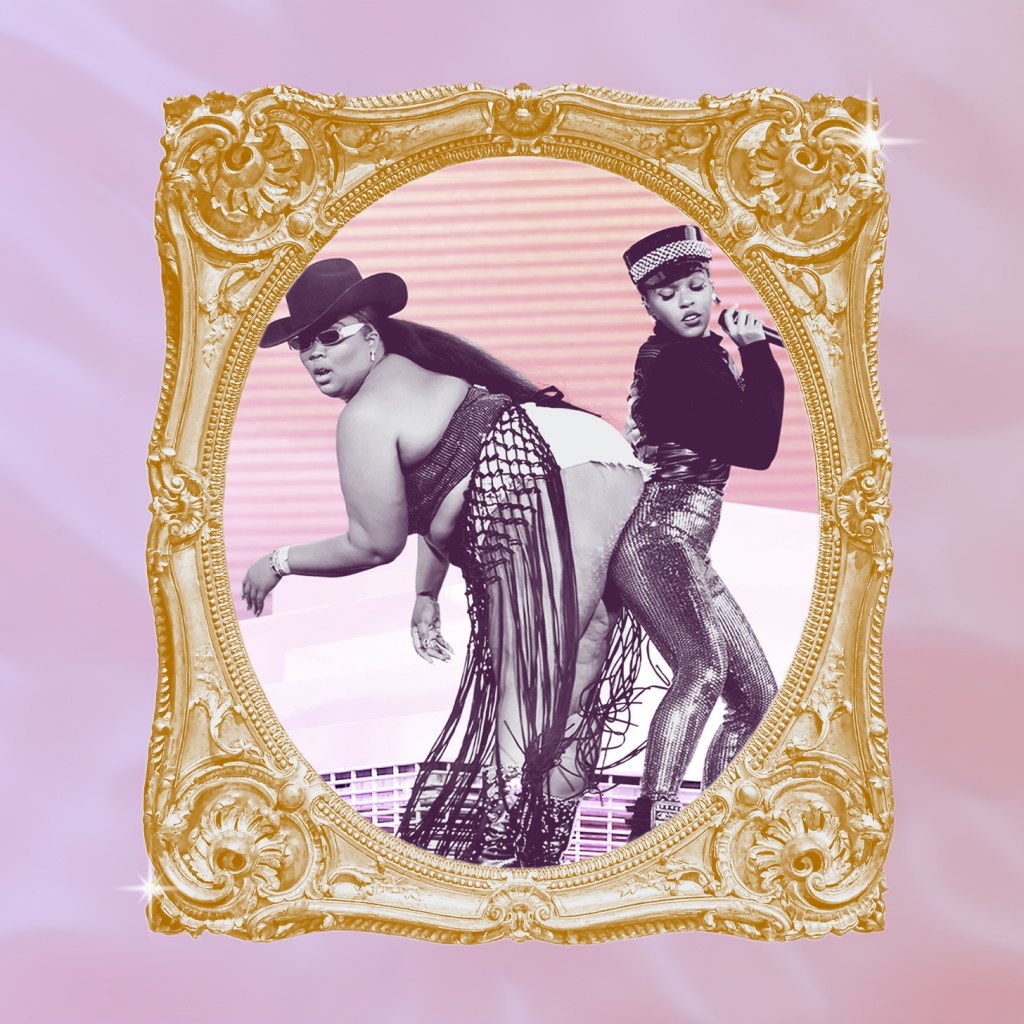Since Miley Cyrus‘s infamous 2013 MTV VMAs performance, twerking has become a mainstream phenomenon. That same year, the term was added to the Oxford English Dictionary. A decade later, you can now find twerk fitness workouts on some of the most popular platforms, and twerking YouTube tutorials have reached tens of millions of views.
Yet, just as with most things within Black culture, the validity and popularity of twerking were only established once a pop star performed it on MTV. In reality, the culture and history of twerking is centuries old, and dates back to the Ivory Coast of Africa, before the transatlantic slave trade.
As we celebrate 50 years of hip-hop and the evolution twerking has made into the mainstream, it’s important to take a moment and reflect the journey it’s taken to get to this place. Both hip-hop and twerking have been subject to censorship, backlash, and continuously scrutinized by mainstream media. Rap groups like NWA were banned from performing in certain arenas. Artists like Megan Thee Stallion and Cardi B have been criticized for being overly sexual and not respecting themselves. However, if hip-hop culture has taught us anything, it’s how to genuinely show up in the world as our most authentic selves. It’s shown us what it looks like to stay connected to our ancestral roots and how to use the pain of our oppression to create a form of expression the world needs. Most importantly, hip-hop has taught us what resilience and consistency can manifest in our lives even when we’re up against the greatest of odds.
Ahead, read through a cultural storyline of twerking, from its African roots through ’90s New Orleans, early viral videos, and Lizzo‘s TED Talk up to the present day.
- Pre-Transatlantic Slave Trade: Twerking’s Historical Origins
- Early 1900s: Black American Culture
- 1993: Twerking and New Orleans Bounce Music
- 2000: Ying Yang Twins’ Debut Single
- 2003: Twerking Is Added to the Urban Dictionary
- 2009: The Twerk Team Goes Viral
- 2013: Miley Cyrus’s Viral VMAs Performance
- 2013: Twerking Is Added to the Oxford English Dictionary
- 2021: Lizzo’s TED Talk
- 2023: Essence Fest “Twerk Off”
Getty / ISSOUF SANOGO / Contributor
Pre-Transatlantic Slave Trade: Twerking's Historical Origins
Twerking has been around in its present form since the early 1990s but is the modern version of an ancient dance called Mapouka that originated in Côte d’Ivoire (i.e. Ivory Coast) in West Africa. It was a celebratory dance performed at festivals where women would shake their buttocks to the beat of a rhythmic drum, according to The Progress blog by Progressive Pupil, an organization associated with The New School in New York and behind the documentary “Black and Cuba”. However, as colonial ideologies and “Christian” values spread throughout the continent of Africa, the dance became taboo and was even banned in certain places or on television.
Getty / Graphic House / Staff
1900s: Black American Culture
Throughout slavery, Black Americans managed to maintain aspects of their African culture, and this manifested through blues singers such as Bessie Smith finding movement in their hips as they performed on stage in the early- to mid-1990s. It emerged in Josephine Baker‘s notorious banana dance, jazz dance, and the jitterbug, too. These dances, similar to twerking today, were wildly deemed inappropriate or distasteful. Yet, the women performing them became symbols or freedom in expression and liberation through the movement.
Getty / Jeff Kravitz / Contributor
2013: Miley Cyrus's Viral VMA performance
During the 2013 MTV VMAs, Miley Cyrus twerked through her duet with Robin Thicke, becomings the most talked about moment of the night. Though Miley had twerked previously on her social media channels, this performance caught the attention of the mainstream media, being reported on by CNN, Forbes, and Business Insider, just to name a few. This viral moment has been credited with the current popularity of the dance form. During the performance, it was the top trending topic on Twitter and reached a peak of 306,100 tweets per minute, according to NBC News.
Getty / Ilya S. Savenok / Stringer
2013: Oxford English Dictionary Adds Twerking, and a Guinness World Record Is Broken
In August 2013, the Oxford English Dictionary added the word “twerk.” It was defined as dancing “in a sexually provocative manner, using thrusting movements of the bottom and hips while in a low, squatting stance.” According to the dictionary, the earliest known use of the verb dates back to the 1840s, and as a noun back to the 1820s.
About a month later, as part of filming for her reality show “Queen of Bounce”, hip-hop artist Big Freedia gathered more than 350 people in New York City to set the Guinness World Record for the most people twerking simultaneously (shown in the photo here). In 2014, Big Freedia broke their own record at the Central City Festival in New Orleans, the home of bounce, with 406 people total, according to Guinness World Records. That remains the record today.

